
Makeshift Metropolis: Ideas About Cities
by
Witold Rybczynski
Published 9 Nov 2010
., 24, 116, 117 Bergdoll, Barry, 132 Berlin, Germany: arcades in, 95 Beverly, Massachusetts, 97 Beyer Blinder Belle, 128–29 Big Ben Tower (London), 135 big-box stores, 101–5 Big Ideas, 58. See also City Beautiful movement; Garden City movement; Radiant City Bilbao Effect, 135, 137, 138, 139, 140, 141, 199 Bilbao Guggenheim Museum (Spain), 133–35, 137, 140 Boca Raton, Florida, 106 Bon Marché stores, 97 Boston, Massachusetts: Bellamy’s vision of, 29; and benefits of cities, 175; and City Beautiful movement, 16; city center of, 76; density of, 177; department stores in, 97; downtown of, 176, 177; employment in, 183; government center in, 82; Jacobs’s visit to, 57, 90; North End of, 57, 90, 91; as port city, 118; riots in, 79; shopping center in, 124–25; size of, 165; as transit-oriented city, 183; waterfronts in, 113, 118, 124–25, 148; West End of, 90 Boston Redevelopment Authority, 124 Boulder, Colorado, 83 Bridgeport, Connecticut, 38 Broadacre City: and cities Americans want, 197; spread of concept of, 76–77; Wright’s vision of, 64–65, 69–70, 71–75, 79, 92, 114 Brockett, John, 9 Brookfield Properties, 142 Brooklyn Bridge, 136 Brooklyn Bridge Park, 1–3, 4–8, 120, 150, 197 Brooklyn Bridge Park Development Corporation, 4 Brooklyn Heights Promenade, 4 Brooklyn, New York, 1–8, 30, 54, 104, 113, 120 Brooklyn-Queens Expressway, 4, 5 Brooks, David, 170 Brussels, Belgium, 95 Bryant Park (Manhattan), 1, 27 Bucks County, Pennsylvania, 166 Buffalo, New York, 12–13, 118 Burj Khalifa (Dubai), 77 Burlington Arcade (London), 95 Burlington, Vermont, 83 Burnham, Daniel H., 14, 21, 22, 24, 64, 96, 116, 117 Calatrava, Santiago, 141 Calgary, Canada, 82 California Institute of Technology, 25 The Cannery (San Francisco), 121, 122 Capper, Arthur, 159 Capper/Carrollsburg housing (Washington, D.C.), 160–61 carbon emissions, 187–88, 189, 190 Carrollsburg Dwellings (Washington, D.C.), 159 Cash for Clunkers program, 185–86 Celebration, Florida, 86 Central Park (New York City), 2, 3, 5, 6, 7, 30, 40, 62, 87 Centrosoyuz Building (Moscow, Russia), 46 Chareau, Pierre, 41 Charleston, South Carolina, 87, 118 Charlotte, North Carolina, 183 Charlottesville, Virginia, 83 Chicago, Illinois: Back-of-the-Yards in, 57, 90; Burnham and Bennett’s plans for, 24, 64, 116–17; and City Beautiful movement, 16, 24; Civic Center (Daley) Plaza in, 82; department stores in, 96; downtown of, 89, 176; and Garden City movement, 27, 30; Great Fire in, 27; iconic architecture in, 136; Jacobs’s visit to, 57; John Hancock Building in, 77; Le Corbusier’s views about, 68; motto of, 30; neighborhoods in, 178; public housing in, 82; and ranking of global cities, 174; Robert Taylor Homes in, 49; size of, 165; State Street Mall in, 84; as transit-oriented city, 183; waterfronts in, 116–17, 118, 125; World’s Columbian Exposition (1893) in, 19–21, 22, 23, 24, 59, 117.
…
.), 14–15, 22, 84, 96, 139 University of Colorado, 25 University of Illinois, Urbana-Champaign, 23 University of Pennsylvania; urban design program at, 127 University of Virginia, 20, 190 Unwin, Raymond, 31, 32, 33, 44, 59, 63, 85, 86–87, 88, 114 Urban Atlantic, 159 urban beautification. See City Beautiful movement urban civilization, 166, 168 urban design, 127–43. See also Bilbao Anomaly urban junctions, 5 urban malls, 94–95, 99–100 urban planning: disillusionment with, 80; impact of recession on profession of, 198–99 urban renewal: and Age of Planning, 93; and Age of Urban Crisis, 80; and calls for change, 198; and challenges facing American cities, 92; and City Beautiful movement, 25; and European and American differences, 191; funding for, 92; Jacobs’s view about, 55–56; and mixed-use projects, 146, 147, 151, 154; and tourism, 122; and willingness to attempt change, 198 Urban Renewal Act, 54 urbanism: demand-side of, 79–92, 199; key concepts of, 8.
…
Whenever I walk through the tall, vaulted waiting room, beneath the somber statues of brooding warriors, and out into the arched loggia across from the Capitol dome, I have the distinct impression not only of arrival, but also of a shared sense of civic engagement. Charles Mulford Robinson, godfather of the City Beautiful movement, c. 1915. The public celebration of urban beauty, as demonstrated by Union Station, was in large part the idea of a man who was neither an architect nor a planner. Charles Mulford Robinson was born in 1869, not in a city but in a small town, Ramapo, New York. He grew up in a well-to-do family in Rochester, where he went to university and worked as a journalist and freelance writer on a wide range of topics: a history of the city, a privately published biography of his great-grandfather Judge Augustus Porter, as well as the libretto of an operetta based on Robin Hood.
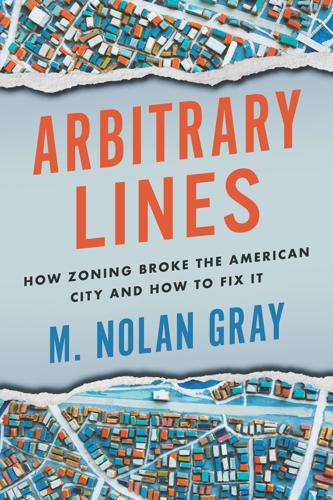
Arbitrary Lines: How Zoning Broke the American City and How to Fix It
by
M. Nolan Gray
Published 20 Jun 2022
Nearly every great civilization has imposed some form of city planning, from the street grids of ancient Rome to the caste segregation of Vedic India. In the American context, many major cities, beginning with Thomas Holme’s grid plan for Philadelphia, had adopted master street plans. This effort to plan cities went up a notch in the 1890s, with the City Beautiful movement giving rise to monumental public spaces across the country.2 Similar movements surrounding parks and sewer improvements meant that by the 1910s, robust city planning institutions were already forming in most cities. Thomas Holme’s 1682 grid plan for Philadelphia. Note the regular interspersed parks and the central plaza.
…
When rapid population growth in cities in the United States began in the late nineteenth to early twentieth century, activists from a range of disciplines found consensus on the need for a more active government role in planning out urban expansion, of both the vertical and horizontal varieties. Open space and transportation planning—heirs of the earlier Garden City and City Beautiful movements—were causes célèbre at early national city planning conferences, which began to meet in 1909. Housing overcrowding was likewise widely recognized as a major issue. These early planning discussions occurred at a time when growth was often haphazard, with new development overwhelming urban areas with density or spreading out into the countryside where basic infrastructure—such as paved roads or sewer connections—would need to be built ex post facto by underresourced municipalities.
…
Both should resist the urge, as this constitutes the less-exciting-yet-necessary vegetables of the book! CHAPTER 1: WHERE ZONING COMES FROM 1. This historical norm can even still be found in American neighborhoods that were built out before the 1910s. 2. For an entertaining history of the City Beautiful movement’s epoch, beginning with the World’s Columbian Exposition in 1893, see Erik Larson, The Devil in the White City: Murder, Magic, and Madness at the Fair That Changed America (New York: Vintage, 2004). 3. For an excellent survey of the economics of skyscrapers, see Jason Barr, Building the Skyline: The Birth and Growth of America’s Skyscrapers (Oxford: Oxford University Press, 2016). 4.
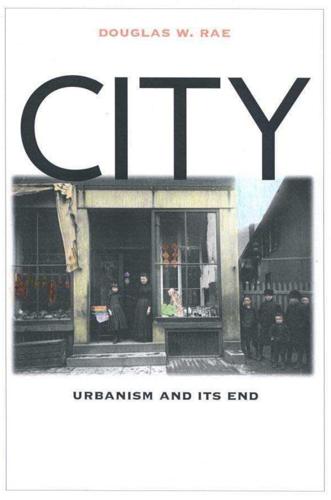
City: Urbanism and Its End
by
Douglas W. Rae
Published 15 Jan 2003
., Atlas of New Haven (Boston: Walker, 1911). 73. Cass Gilbert and Frederick Law Olmsted, “Report of the Civic Improvement Committee” (New Haven Civic Improvement Committee, 1910). 74. The City Beautiful Movement crested at about this time. On its high-water mark, see Daniel H. Bennett and Edward H. Burnham, Plan of Chicago (1909) (New York: Princeton Architectural Press, 1993). See also William H. Wilson, The City Beautiful Movement (Baltimore: Johns Hopkins University Press, 1989). 75. Gilbert and Olmsted, “Report of the Civic Improvement Committee,” 13 –14. 76. In making these estimations, I have done what I suppose the 1910 researchers to have done.
…
To timidity, to ‘the weak hand of uncertain purpose’ to obstinacy and selfishness, as well as to the absence of a principle, do cities owe the insignificance of many of their streets and thoroughfares.”18 This was a root-and-branch rejection of the political regime that Frank Rice and Isaac Ullman were running, a fact which would limit the practical impact of Seymour’s initiative on the city’s future. Seymour’s view was derivative of the City Beautiful movement then at high tide, and this vision harked back to the pre-industrial (or by 1910 anti-industrial) vision that will be recalled from Amos Doolittle’s account of New Haven in 1824 (Chapter 2). Thus did architect Cass Gilbert congratulate New Haveners on having inherited something as beautiful 80 F A B R I C O F E N T E R P R I S E as the original Green, and warn them about the old city having been “encroached upon in recent years by so-called ‘modern improvements’ and buildings . . . erected regardless of the environment and without harmony of style.”19 At a public meeting, called in response by then-mayor John P.
…
The one clearly defined case study of possibly transformative policy in Rice’s reign appeared in the issuance of the report on improvements issued at the end of his first year in office. In December 1910 Cass Gilbert and Frederick Law Olmsted’s Report of the Civic Improvement Committee found its way to Rice’s desk. This was a selfconfident document funded by the most prominent families in the city and backed intellectually by the national City Beautiful movement.27 The sponsors of the project—contributors of $100 each—were a who’s who of the city’s business and intellectual elite. The list began with Governor Rollin Woodruff, Eli Whitney III, and Isaac Ullman and ran to multiple representatives of leading families such as the Farnams, Englishes, Pardees, and Trowbridges.
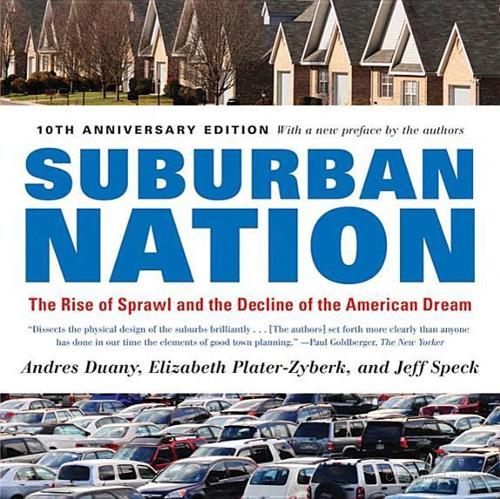
Suburban Nation
by
Andres Duany
,
Elizabeth Plater-Zyberk
and
Jeff Speck
Published 14 Sep 2010
Cities such as London, Paris, and Barcelona, which in the mid-nineteenth century had been virtually unfit for human habitation, were transformed within decades into national treasures. Life expectancies rose significantly, and the planners, fairly enough, were hailed as heroes. The successes of turn-of-the-century planning, represented in America by the City Beautiful movement, became the foundation of a new profession, and ever since, planners have repeatedly attempted to relive that moment of glory by separating everything from everything else. This segregation, once applied only to incompatible uses, is now applied to every use. A typical contemporary zoning code has several dozen land-use designations; not only is housing separated from industry but low-density housing is separated from medium-density housing, which is separated from high-density housing.
…
Real estate developers, whom Americans entrust to build their communities, adhere to regulations set by government policy. If the public sector does not actively involve itself, with vision and power, private action cannot be anything but self-interested and chaotic. This state of affairs may seem inevitable, but the first quarter of the twentieth century provides evidence of an alternative. The City Beautiful movement was a period of urban rebuilding and new-town construction in which civic pride, beauty, and community were a consensus agenda, promoted to an optimistic populace by wise leaders at both the local and federal levels. Of course, some things have changed since the enlightened building of that progressive era—the development of new transportation and communication technologies, enormous social flux, and the globalization of markets—but our governments would do well to acknowledge that these changes have only intensified the need for properly designed communities.
…
Its intellectual underpinnings can be found in the turn-of-the-(twentieth-)century writings of Ebenezer Howard, Raymond Unwin, Camillo Sitte, Hermann Josef Stübben, and the other wonderfully unspecialized planners and designers of the progressive era. They understood that the physical creation of community was the work of generalists, to be undertaken by artists and scholars rather than by single-minded engineers and technocrats. Their legacy, the sparkling downtowns of the City Beautiful movement and the elegant suburbs of the teens and twenties, appropriately redefined town planning as Civic Art.dx Indeed, we are equally indebted to the places that these planners created, many of which were brought to our attention by Robert A. M. Stern and John Massengale’s early 1980s book and exhibition, The Anglo-American Suburb.
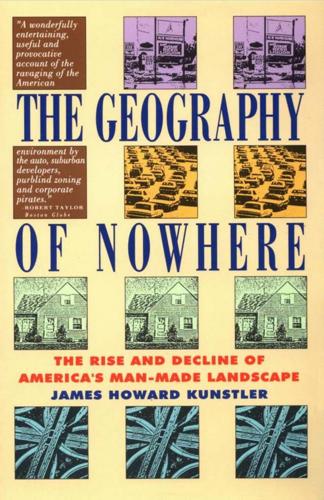
The Geography of Nowhere: The Rise and Decline of America's Man-Made Landscape
by
James Howard Kunstler
Published 31 May 1993
Louis in 1904, the Alaska-Yukon-Pacific Exposition at Seattle in 1910, and the Panama-Pacific Exposition at San Francisco in 1915, among others. They served as demonstration projects for a manner of heroic urban planning that would evolve into the City Beautiful movement in America, a concerted effort to bring focus and unity where chaos, visual squalor, or monotony had reigned, and to do it on a scale not seen since the Baroque period. The City Beautiful movement might be viewed as just another architectural fad. And given its rather short life span of two decades, it probably was, though it left us with some of our most beautiful and enduring public monuments. lVorld Wall. effectively swept it away.
…
Duany and Plater-Zyberk, then in their early thirties, had become obsessed with classic town planning of the early twentieth century, especially as practiced in England by Raymond Unwin and in America by John Nolen. Unwin and Nolen had raised town planning to a high art in the days of the City Beautiful movement. What's more, their ideas actually got built. Nolen designed hundreds of major civic projects, including Madison, the Wisconsin state capital. Automobiles entered B E T T E R P L A C E S the scene at the height of their careers and they found ways to accom modate them without compromising their standards of good civic de sign.
…
., 258 anti-urban bias, 39, 156 Arab Oil Embargo, 108-9, 195, 273 arboretums, 158 Arcadian ideal, 42-43, 56 architecture, 33, 34, 59 Adam style of, 152 "aliveness" and, 252 anathyrosis construction and, 64 arboretums and, 158 balloon-frame construction and, 54, 161-63 "bathing rooms" and, 160 Bauhaus and, 71-73 Beaux Arts, 62-64 City Beautiful movement and, 67 Columbian Exposition and, 61-66 corporate, 81-82 "deadness" and, 252 factory, 67-70 "follies" and, 157 Frank Lloyd Wright and, 164-65 Georgian, 150-53 Gothic, 156-57 Grecian, 42 Greek Revival and, 153-56 International Style of, 73-76 of Los Angeles, Calif. , 207, 209-10 lost skills of, 245-46 mass production and, 163-64 neoclassical, 76 pattern language and, 249-53 Postmodern, 81-84 I N D E X architecture (cont.) in postwar era, 78-80 Purism and, 72-73 Radiant City concept and, 73, 78-80 Railroad Romanesque, 62 Romanticism and, 152-53 in Seaside, Fla. , 253-57 Shingle Style of, 63, 243 skyscrapers and, 65, 66, 75, 80 socialism and, 70-71 Spanish Colonial style of, 209 structural steel and, 65, 66 tenements and, 36 Traditional Neighborhood Devel opment and, 253-60 Victorian, 159 villas and, 158-59 Arendt, RandalL 262-64, 266, 267 Armour Institute, 77 Arroyo Seco Parkway (Los Angeles, Calif. ), 212 art, 34, 123 civic, 66�7, 113 decorative, 72, 73 industrialism and, 40-41 socialism and, 70-71 Art Deco, 72 assembly line, 89, 92, 191 AT&T Building (New York, N .
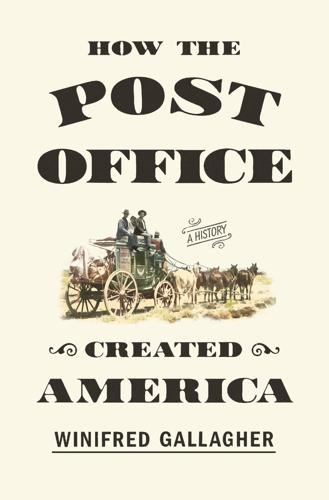
How the Post Office Created America: A History
by
Winifred Gallagher
Published 7 Jan 2016
Some of its greatest achievements during its zenith were particular boons for the long-underserved agrarian population, but other important advances benefited rural and urban Americans alike. 13 REDEFINING “POSTAL” JUST AS THE POST in its golden age did much to develop rural America’s physical and social landscape, it also contributed to the progressive City Beautiful movement, which flourished between 1890 and 1920. Its sponsors attempted to counter urban ugliness and squalor with grand architecture that glorified the public commons and fostered civic pride. The palatial new post offices designed for big cities combined beauty, utility, and grandeur to celebrate both the government’s commitment to the people’s good and the Post Office Department’s importance to civic life.
…
The palatial new post offices designed for big cities combined beauty, utility, and grandeur to celebrate both the government’s commitment to the people’s good and the Post Office Department’s importance to civic life. No less than Egyptian pyramids or French cathedrals, these heroic American buildings illustrate an institution’s peak and a culture’s moment in time. Like the new national parks, the buildings of the City Beautiful movement were aesthetic antidotes to the Industrial Revolution’s environmental toxins. Rapid, unplanned urban growth had produced densely populated slums crammed with smoky factories and pestilent tenements, which cast a pall on the quality of life for rich and poor alike. With a largeness of spirit and purpose now almost unimaginable, an idealistic group of civic leaders, philanthropists, and architects, including Daniel Burnham and Frederick Law Olmsted, decided to combat this blight with an “American Renaissance.”
…
• • • IF THERE’S A PHYSICAL SYMBOL of what the combination of the post at its peak, the mighty railroad, and the Progressive Era’s politics had achieved by the early twentieth century, it must be the James A. Farley Post Office, in New York City. (First known as the Pennsylvania Terminal, then the General Post Office Building, it was later renamed for President Franklin Roosevelt’s powerful postmaster general.) This treasure of the City Beautiful movement, built in 1912 by the prestigious architectural firm of McKim, Mead, and White, proclaims itself to be the epicenter of the busiest, most important city in the United States—perhaps the world. The building sprawls across two full blocks of prime Manhattan real estate, on Eighth Avenue between 31st and 33rd Streets; its five stories wrap around a great central courtyard that flooded its work spaces with glorious natural light.

Street Smart: The Rise of Cities and the Fall of Cars
by
Samuel I. Schwartz
Published 17 Aug 2015
The clearest inspiration for the Concourse was Paris’s Champs-Élysées, which is shorter but wider than the Grand Concourse; at its widest point, north of 161st Street, the Grand Concourse is “only” 180 feet from curb to curb. The Champs-Élysées has occupied the same Parisian acreage since the 1600s, but the Grand Concourse is very much a nineteenth-century creation. Like the Good Roads Movement, it was a child of the 1890s, one of America’s purest examples of what came to be known as the “City Beautiful” movement, a reformist crusade marketed as a Progressive answer to the evils of late-nineteenth-century cities: tenements, slums, and corruption. Which was, as it happens, also how Progressives saw the automobile itself. Like other tributes to the reform-minded movement, such as the World’s Columbian Exposition that dominated the Chicago skyline in 1893, Washington’s Capitol Mall, and the Benjamin Franklin Parkway in Philadelphia, the Grand Concourse featured extremely wide roads, including a central thoroughfare fifty feet wide, two thirty-five-foot-wide access roads, eight-foot-wide medians, and twenty-foot-wide sidewalks, all of them heavily planted with gardens.
…
It also shared with them a common history of replacing poor neighborhoods by the simple expedient of moving their occupants, well, anywhere else. Whatever its built-in contradictions—the most beautiful cities, it turns out, aren’t always the most livable, and roads wider than a football field aren’t what you might call pedestrian friendly—the City Beautiful movement, like the Grand Concourse itself, was unashamedly urban. Construction on the Grand Concourse began in 1894 and finished fifteen years later, in 1909. By the 1930s, with a subway line running under the boulevard, the three-hundred-plus neo-Tudor, Art Deco, and Art Moderne apartment buildings that lined it had become an extremely attractive place for immigrant families that had graduated from entry-level neighborhoods like the Lower East Side or Bensonhurst.
…
See Charleston Area Regional Transportation Authority; Chattanooga Area Regional Transportation Authority Carter, Jimmy, 137 Central Park, and justification for reopening to traffic, 48–51 Charleston, South Carolina, 180, 242 transportation network in, 166–170 Charleston Area Regional Transportation Authority (CARTA), 168 Chattanooga, Tennessee, 190–191 Chattanooga Area Regional Transportation Authority (CARTA), 190–191 Chicago, Illinois, 85, 191, 200 walkability in, 148–151 Chicago Department of Transportation, 148 Chicago Municipal Code of 1922, 151 Chicago Pedestrian Plan, 148 Chicago-to-Miami Dixie Highway, 14 China, cars in, 80, 83 Cities decline of, 19–22, 33, 44 European, 44, 103, 176 and limited-access roads, 20–21, 29n, 31, 33, 35, 50, 61–62 See also Urban living City: Rediscovering the Center (Whyte), 143 City Beautiful movement, 27–28, 29 The City in History (Mumford), 20 CityMapper, 195 Civil rights, 36, 214 Civit, Adria, 121–122 Clean Air Act of 1970, 50 Columbia, Maryland, 159 Columbia University, Earth Institute, 235 Columbus, Ohio, 242 walkability in, 131–134 Columbus Healthy Places program, 132–134 Community, and traffic, connection between, 100–101 Community density, 242 and political choice, 224–225, 227 and prosperity, 105 Commuting by car and commuting time, increase in, 80–82 cost of, 103–104 and physical and mental stress, 93–94 versus walking or public transit, 93–97 Commuting effect, 81 Complete Streets, 131–132, 151–152.
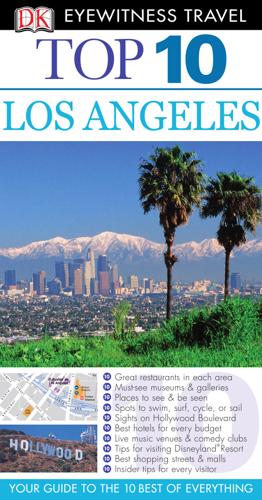
Eyewitness Top 10 Los Angeles
by
Catherine Gerber
Published 29 Mar 2010
Hale became a board member in 1907. d Map F2 • 1200 E California Blvd • 626-395-6811 • Campus open anytime • Free guided tours: 2pm Mon–Fri (no tours during the winter break & on rainy days) • www.caltech.edu Civic Center * Pasadena This grand complex was inspired by the early 20th-century City Beautiful movement. It Rose Bowl 88 Sign up for DK’s email newsletter on traveldk.com Exploring Historic Pasadena Morning consists of three European-style Beaux-Arts structures stretching along a central axis – the Main Library, the Civic Auditorium, and the City Hall. Architect Myron Hunt designed the public library.
…
Onizuka Memorial 78 ATMs 141 Audiences Unlimited 58, 140 Autopia 31 Avalon 36 Avalon Casino 36 Avalon Hotel 147 Avenues of Art & Design 102, 104 Avila Adobe 20, 21 Avila, Don Francisco 20 B B&Bs 151 Babe & Ricky’s Inn 61 Baltimore, David 88 Banana Republic 53 Bang Improv Studios 55 banking 141 Banning, Phineas 39, 127 Banning Residence Museum 127 The Bar at the Hotel Bel-Air 61 Bar Marmont 65, 105, 106 Barnes & Noble 135 Barneys New York 65 Barnsdall, Aline 97 bars 60–61, 100, 106 Barnsdall Park 40 Basketball Courts 122 Beach Architecture 122 beach hotels 145 Beach House at Hermosa Beach 145 beaches 44–5 Beachwood Drive 95 Beard Papa 10 Beauty Bar 100 Behind-the-Scenes-Tour 128 Bel-Air 9, 110–115 Believe in the Magic 31 Belmont Brewing Co 131 Belmont Shore 129 Belvedere 115 Bergamot Station Arts Center 117 Best Western Hollywood Hills 149 Best Western Jamaica Bay Inn 145 Best Western Marina Pacific Hotel & Suites 145 Beverly Center 53 Beverly Garland Holiday Inn 149 Beverly Hills 8, 42, 110–115 Beverly Hills Civic Center 111 Beverly Hills Hotel 111, 146 Beverly Hills, Westwood, & Bel-Air 110–115 map 110 restaurants 115 tourist attractions 114 Beverly Laurel Motor Hotel 148 Beverly Wilshire 144 Biddy Mason Park 107 Big Blue Bus 137 Big Red Cars 25, 87 Big Thunder Railroad 31 Bijan 114 Bing Theater at LACMA 57 Bissell House 151 Bistro 45 93 Blue Bayou 30 Blue Café 61 Blue Line 137 Blue on Blue 61 boat tours 138 Bob Baker Marionette Theater 51 Bodhi Tree Bookstore 108 Bonsai Court 23 Book Soup 65 Boone Gallery 23 Border Grill 125 Borofsky, Jonathan 78 Boulle, André-Charles 13 Bowl Museum 95 Bradbury Building 41 Brewery Arts Complex 84, 85 The Bridge 56 Broadway Historic Theater District 77 Bronson Caves 29 budget hotels & hostels 148 budget travel 140 Bullocks Wilshire Building 84 Bunker Hill Steps 73, 77 Bunny Museum 63 buses 136, 137 business hotels 150 C Cabrillo Beach 45, 124 Cabrillo Marine Aquarium 45, 51, 127, 129 Cadillac Hotel 145 Café Santorini 89, 93 Café Stella 101 Cal Mar Hotel Suites 149 Calder, Alexander 43, 78 California Adventure 30, 32, 33, 34, 50 California African American Museum 81, 83 California Institute of Technology (CalTech) 88 Cinerama Dome 96 CineSpace 100 City Beautiful movement 88 City Hall Beverly Hills 111 Downtown 72 Pasadena 89 City Pass Hollywood 140 CityWalk 27 Ciudad 66, 79 Civic Auditorium 89 Cloughertys, the 63 Club Spaceland 61 Coast Starlight 136 Cobras & Matadors 109 Coca-Cola Bottling Plant 77 The Cole House 91 Cole’s 79 The Comedy & Magic Club 55 Comedy Store 55, 105 Conga Room 19, 60, 100 consulates 135 Cooper, Alice 96 “Corporate Head” 78 Court of Religions 43 Crafts & Folk Art Museum (CAFAM) 105 Creative World 81 credit cards 141 crime-prone areas 139 Critter Country 30 Crossroads of the World 96 Crunch Gym 47 Crustacean 115 Curtains up for California!
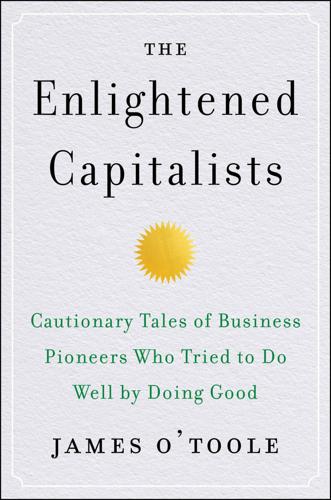
The Enlightened Capitalists
by
James O'Toole
Published 29 Dec 2018
For the rest of his life, Milton Hershey would concentrate on the chocolate business.4 Milton’s fascination with chocolate had begun just before he met Kitty, when he was an enthusiastic frequent attendant at the 1893 Chicago World’s Columbian Exposition. There, awed by Daniel Burnham’s farsighted “White City” design of the fairgrounds and buildings, Milton became an early advocate of the era’s City Beautiful movement, vowing someday to create a model city for his employees with lush parks and wide boulevards. Furthermore, Milton enthusiastically embraced Burnham’s famous advice, “Make no small plans.” While in Chicago, it seems quite likely Milton also visited nearby Pullman, Illinois, where George Pullman provided housing for some twelve thousand of his railway-car factory workers and their families.5 While that company town was well planned and offered its residents many modern amenities, Pullman went far beyond being paternalistic in the benevolent mode of Robert Owen and William Lever.
…
The factory offered workers large, clean restrooms equipped with showers and a bright lunchroom. Employee safety was stressed, and a nurse was always in attendance. Adjacent to the factory, he began work on a model town to house the thousands of men and women he envisaged hiring. Drawing inspiration from Lever’s Port Sunlight and Burnham’s City Beautiful movement, Hershey hired engineers, architects, landscape gardeners, and others to design a model town, draw up a street grid, and begin to lay its infrastructure. Hershey wanted the latest, best, and most beautiful of everything from sewer lines to community buildings. His well-planned town would have green open spaces, a public park, a zoo, a library, a swimming pool, and a hospital.
…
Penney and, 34–35 John Lewis Partnership, 120 manager partnerships, 35–37 Marks & Spencer and, 210 origins of, 35 Woolworths, 210 See also specific companies Chaparrel Steel, 286, 424 Chapman, William, 209, 223 Chappell, Kate, 360, 365, 366–67, 368, 372 Chappell, Tom, 342, 404, 428, 431 attempts to “do good while doing well,” 361–64, 365 awards and kudos, 368 Christian values and managerial philosophy, 360, 361, 428 company ownership and, 365, 368, 369–70 compared to De Pree, 365–66 contradictions of, 367–68 critics of, 373–74 intentionality of business virtue, 365 “the middle way” of pursuing “profit and the common good,” 368–70 motive for selling the business, 372 Ramblers Way, 372 sells to Colgate, 371–75, 395, 403, 427 The Soul of a Business, 361–62, 367–68 storytelling to convey company culture, 365–66 Tom’s of Maine and, 360–75 “Tom’s of Maine Statement of Beliefs,” 363 Charles V, Emperor, xxv, xxvi Chicago World’s Columbian Exposition, 76 Machinery Building, 77 Chick-fil-A, 464 child labor Asian subcontracting and, 203 fortunes built on, 23 J&J’s prohibition on, 148 Lever Bros. prohibition on, 57 Nike’s contractors and, 425 Owen’s reforms and, 13, 22–23 textile mills and, 3–4, 5–6, 12 Chouinard, Malinda, 402 Chouinard, Yves, 395, 404, 428 as billionaire, 403 as the “capitalist cat,” 403 critics of, 401 the “eminence green,” 401, 403 management practices, 402 Patagonia and, 400–403 Churchill, Winston, 59, 473 Ciepley, David, 434 Circle, The (Eggers), 449–50 Citigroup, 260 City Beautiful movement, 78 City National Bank, Miami, Fla., 44, 45 Clemens, Samuel, xxxii “The Gilded Age,” 31 Cleveland, Ohio, 418–19 Clif Bar & Company, 457 Clinton, Bill, 174 Close, Chuck, 322, 326–27 CoBank, 416 Cohen, Ben, 376–94, 426, 427, 428, 436, 464 background and personal life, 376–77 Cherry Garcia flavor, 387 company ownership and, 380, 436 discord and, 390 founding of Ben & Jerry’s, 377 handles sales of Ben & Jerry’s, 379 hires Fred “Chico” Lager, 381 learning the business, 377–79 as marketing maven, 379, 381, 389 social activism and, 387–88, 394, 451 social responsibility and, 383 Unilever and, 394 Cole, Margaret, 18 Coleridge, Samuel Taylor, 10 Colgate-Palmolive Company acquires Tom’s of Maine, 371–75, 392 short-termism of executives, 374 “social audit,” 372 traditional business model, 374 Collins, David, 168, 170, 172 Columbus, Ind., 313, 315 architects designing buildings for, 315 community relations Arco and, 312 Ben & Jerry’s and, 378, 383, 386, 387, 388, 393 Body Shop and, 351, 352, 359 CDC and, 250, 252 cooperatives and, 415 Friedman on, 439, 507n13 Hershey and, 83, 90 J&J and, 157, 161 John Lewis Partnership and, 122, 131, 132 Kodak and, 328 Levi Strauss and, 183–85, 200, 201–2 Lincoln Electric and, 110, 113, 116 Marks & Spencer and, 213 Nucor and, 273 Penney and, 46 SRC Holdings and, 409 SWA and, 296 Tom’s of Maine and, 362, 365, 366, 370, 371, 374 Unilever and, 66 Wegman’s Food Markets and, 397 Companies with a Conscience (Scott and Rothman), 497n29 competitive advantage economies of scale and, 37 employee benefits and, xlii ethical behavior and, xlii Kelleher and SWA’s culture, 295 Nucor’s “mini-mills,” 266 Penney’s and, 37–40, 48 social engagement activities as, 443 Condition of the Working Class in England, The (Engels), 5 Conniff, Richard, 467 Conscious Capitalism (CC) movement, xxxix, 452–56 “consensus management,” 126 Container Store, 455 contingent workforces, 473–76 Control Data Corporation (CDC), 243–63, 395, 424 acquisitions and diversifications, 247–48 antitrust suit against IBM, 245–46 Berg and management of, 257–58 City Venture Corporation created, 254 Commercial Credit Corporation and, 247, 260 community relations, 250, 252 Control Data Institute (CDI) learning centers, 255–56 Cray departs, 246 employee day-care center, 252–53 Employment Preparation Service created for training, 253–54 expansion and growth, 257 failure as a consequence of virtuous practices, 260–62, 327, 427 failure of company, 260–61, 395 Fair Break, 254 founding of, 244 gaffs in Iran and South Africa, 256–57 headquarters, Minneapolis, 248 incorporation of, 244 inner-city plants closed, 260 layoffs at, 260 Medlab, 254 minority hiring at, 251–54 Norris leaves, 258–60 Norris’s attention on social mission, 261 Norris’s business model, 249–54 Norris’s ideas and, 248 peripherals of, 247–48 Perlman as CEO, 260 plants opened in high-poverty areas, 251–54 PLATO education technology, 254–57, 260, 261 poor financial performance, 259 Price and management of, 257–58, 260 profits and, 250 remnants of the company, 260 Rural Ventures, Inc., 254 selling off of subsidiaries, 260 size, revenue, and profits (1970), 247 social responsibility and, 249, 250–51, 254 stock of, 248 success of, 245 Ticketron and, 248, 260 training and, 252, 253–54, 255 United School Services of America and, 257 women hired at, 251, 252 Cook, Lodwrick, 312 Cook, Tim, 444, 463–64 Cooper, Francis D’Arcy, 64 Co-Operative Bank, 417 cooperative movement, 29, 41, 133, 415, 417–18 cooperatives, 415–19, 440, 476 artist co-ops, 416 B corporation movement and, 458 business practices of, 415 Cleveland Model, 418–19 community relations, 415 consumer co-ops, 416 credit unions, 419 critics of, 417 employment numbers, 418 examples of, 415–16 financing problems for, 417 governance issues, 417 idealism and, 416–17 ignored by financial media and business schools, 415 Mondragón, Spain and, 417, 418, 440 mutual companies, 419 new, in the U.S., 419 in the UK, 418 Co-Opportunity Natural Foods, 415 corporate citizenship, 312, 439, 443 consortia of enlightened capitalists and, 451–56 corporate philanthropy, 54, 250, 307, 311, 312–13, 439, 466 corporations/corporate capitalism, xi, xii, xiii, xiv, xx, xxxvi, xxxix, 46, 396, 437 activist investors and, xli, 447 agency theory and, 424, 439 Anglo-American vs.
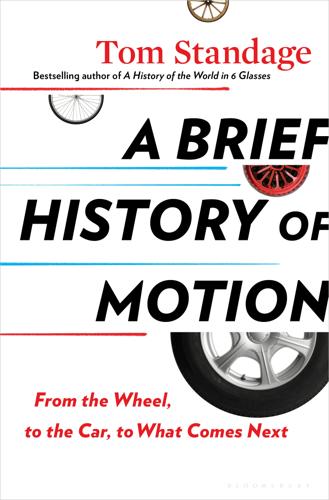
A Brief History of Motion: From the Wheel, to the Car, to What Comes Next
by
Tom Standage
Published 16 Aug 2021
But these proposals, with their huge costs and disruption just to make life easier for a few wealthy motorists, proved understandably unpopular and went nowhere. Even so, many city planners and architects of the time, not just motorists, were enthusiastic about the new ways cars could reshape cities. Members of the City Beautiful movement, a design group that had come together in the 1890s, believed that changing the layout of North American cities could help solve many of their problems. At a national conference held by City Beautiful planners in 1915, attendees were almost unanimous in their view that cars offered opportunities to change the way cities worked for the better (only one architect, visiting from Germany, disagreed and warned that the result would be gridlock).
…
., size and number of, here car-sharing clubs, here car subscription services, here chariots invention and spread of, here Romans’ racing of, here in warfare, rise and obsolescence of, here, here China bike sharing in, here car sales in, here, here control over raw materials for electric cars, here ride hailing, popularity of, here social credit system in, here cities anti-car policies, increase in, here autonomous vehicle benefits for, here early, limited impact of wheeled vehicles on, here railroads’ impact on, here and transportation data, misuse of, here and white migration to suburbs, here city planning car traffic as central concern in, here, here, here, here City Beautiful movement, here garden city concept, here, here Le Corbusier designs, here, here World’s Fair city of the future (1939), here, here, here civil rights movement, and cars, here climate change, and electric cars, here coaches changes to accommodate, here, here critics of, here long-distance stagecoaches, here origin of term, here rise in popularity, here for short-term hire (hackneys), here, here speed increases of early 19th century, here as status symbols in Europe, here, here Communities Against Rider Surveillance (CARS), here coronavirus pandemic anti-car traffic laws introduced in, here, here and appeal of suburbs, here and car use, here, here, here cours.
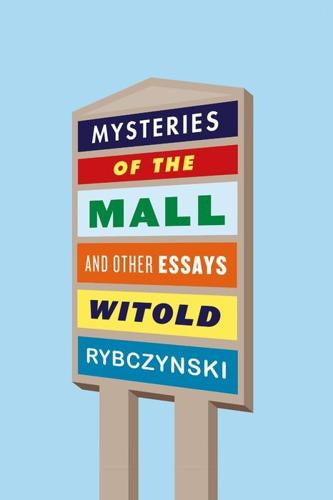
Mysteries of the Mall: And Other Essays
by
Witold Rybczynski
Published 7 Sep 2015
In the case of Central Park, the competition for the design was held in 1858, and by the following summer work was sufficiently advanced that a program of free concerts was inaugurated and daily attendance in the park reached as high as 100,000. The following winter, the frozen lake was ready to receive skaters. New Yorkers still skate in Central Park in the winter and boat on the lake in the summer. What is striking about Olmsted’s parks is their endurance. Generally, American cities have proved impervious to planning. The City Beautiful movement lasted three decades after its birth in 1900, but except in Washington its grand plans remained largely incomplete. Today, only forty years after urban renewal we are demolishing public housing projects, and some cities have even dismantled urban freeways. The fad for pedestrian malls closed to traffic was likewise fleeting.
…
black migration to Cabrini-Green in Harold Washington Library Center in Robert Taylor Homes in South Park in Chicago Housing Authority Chicago Loop Chicago Sun-Times Chicago Tribune, Cabrini-Green competition of Chirac, Jacques Christiani, Rudolf Christiani & Nielsen Chrysler Building Chung, Myung-Whun Cincinnati, Ohio, Tocqueville on cities: atrium hotels in automobiles and building heights in burden of poverty on college cultural capital of decline of manufacturing in density of downtowns in, see downtowns empowerment zones and evolution of Interstate system and multiplexes and opposing interests of tourists and residents in planned, see planned communities preservation movement and quality of life in shrinking populations of sprawl and, see sprawl suburban-style housing in suburbs and; see also metro areas as tourist destinations underclass in urban renewal in cities, downsizing of divestiture in housing abandonment and impact on poor and minorities of legal and bureaucratic obstacles to neighborhood consolidation in population decline and and sense of community Cities Without Suburbs (Rusk) City and State magazine City Beautiful movement city planning Le Corbusier and parks and sprawl and Wright and civic infrastructure civic monuments Cividale, Italy Civilisation (TV show) Clark, Kenneth class, use of space and classicism Cleveland, Ohio Clinton, Bill, Executive Order 12977 of Codman, Ogden, Jr. Cohen, David in municipal union negotiations Coignet, Edmond college cities Cologne Colonne de Juillet Columbia, Md.
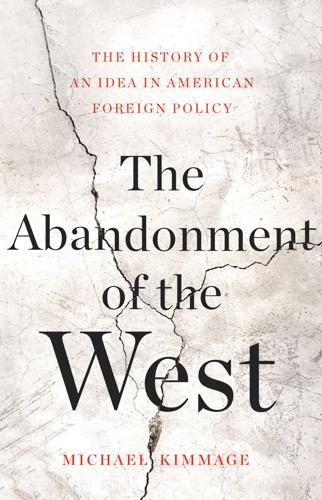
The Abandonment of the West
by
Michael Kimmage
Published 21 Apr 2020
In 1816, despite the overweening obsession with classical antiquity, Breasted’s dislodgement of the Christian faith would have been less popular. It might even have been scandalous. In 1916, it was within the academic mainstream.11 The ethos and architecture of the Chicago World’s Fair redefined the American city as well as the American university. It launched the City Beautiful movement, which consisted of large-scale planning, grand buildings, open spaces and neoclassicism run amok. Nowhere was the effect more meaningful than in the nation’s capital. The only planned city in the United States, Washington once had a Tiber Creek. The city had been envisioned from the start as the Rome of the Western Hemisphere.
…
Nevertheless, the destruction of the old Pennsylvania Station was a cruel act of erasure, and the buildings that were put up in its place, the current Penn Station and Madison Square Garden, had none of the cultural significance and none of the civic grandeur that McKim’s building had so proudly communicated. The disappearance of the neoclassical Penn Station sparked a movement to preserve historic buildings in the United States that was quite different in intent from the McMillan Plan, from the Chicago World’s Fair and from the City Beautiful movement. McKim’s Penn Station, backward-looking as its architectural style was, was still the epitome of a forward-looking modern building when it went up. So too was the National Mall a modern public space as it evolved, designed as a step on the advance of modern civilization, as the visible evidence of progress.
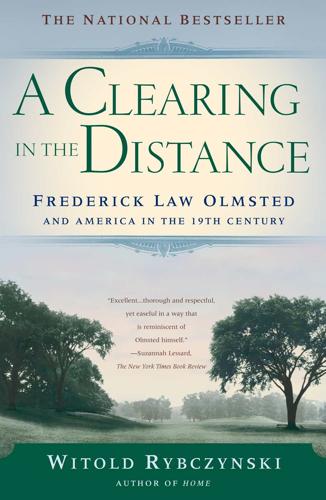
A Clearing in the Distance: Frederick Law Olmsted and America in the 19th Century
by
Witold Rybczynski
Published 1 Jan 1999
It is not a geometric diagram nor a theoretical construction imposed on the city. Unlike his San Francisco plan, it does not depend on a single idea. Nor, despite his respect for Ellicott, did Olmsted produce a version of European neo-baroque planning such as would later be revived by the City Beautiful movement. He was no historicist. Instead, his highly original plan was a complex and refined network of parks, parkways, avenues, and public spaces that represented a degree of sophistication in city planning previously unknown in the United States. He distributed parks throughout the city to make recreation space more accessible.
…
., 217, 221, 253, 286, 287, 290, 298–302 fire in, 310–11 parks in, 299–302, 308, 311, 315–16, 355, 360, 386–92 World’s Columbian Exposition in, 340, 386–99 Chicago River, 302 Chicago Times, 299 Children’s Aid Society, 104, 134, 150, 269, 355, 373 children’s magazines, 136, 138 Childs, Emery E., 290, 291, 292, 298–99, 300 China, 48–55 Chinese immigrants, 229, 232, 251, 252 cholera, 32, 78, 81, 85, 188, 262 Christian Citizen, 66 Christian Commission, 215, 217 Christian Examiner, 141 Church, Frederic Edwin, 309–10, 311 Churchman, 31 Cincinnati, Ohio, 215, 217, 253 City Beautiful movement, 289 civilization, FLO’s views on, 253, 254, 256, 258, 285, 297 Civil War, U.S., 197–226, 303 end of, 248 Sanitary Commission and, see Sanitary Commission, U.S. start of, 197 see also specific battles and generals Clark, Abby, 56, 59 Clark, Galen, 235, 238, 257, 368 Clark’s, Calif., 235–36, 257 classicism, 374, 399 Cleveland, Horace, 163, 315, 320, 348, 355 Clifton, N.Y., 276, 284, 292, 303–4, 309 Clough, Arthur Hugh, 191 Code Noir, 122 Codman, Henry Sargent, 354, 357, 368–69, 370 death of, 392, 400 as FLO’s partner, 385–87, 389–92 Colfax, Schuyler, 256, 299 College of California, 245, 250, 262–63, 269, 280, 292, 349 Collinsville, Conn., 39 Compromise of 1850, 106, 107 Condit, Frances, 56 Confederacy, 196–97, 200–201, 208–12, 214, 237–38, 303 Congregationalism, Congregationalist, 25, 63–64, 71 Congregationalist, 31 Congress, U.S., 22, 101, 105, 125, 238, 320, 321 see also House of Representatives, U.S.; Senate, U.S.
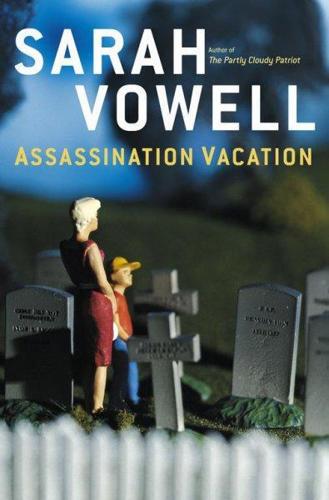
Assassination Vacation
by
Sarah Vowell
Published 28 Mar 2005
Burnham’s assignment was to draw a new plan for the city of Manila. Burnham had been the mastermind behind the 1893 World’s Columbian Exposition in Chicago. That fair was an architectural watershed. The “White City,” a neoclassical enclave on the shores of Lake Michigan, would spark what came to be known as the City Beautiful movement of urban design, involving Greco-Roman buildings and monuments erected on geometric street grids among grand boulevards and restful, pretty parks. After the success of the fair, Chicago businessmen hired Burnham to draw up new plans for the lakefront and eventually the city as a whole. Before he did, like so many artists and architects of his generation, Burnham took off on a European study trip, where he got religion — pagan religion.
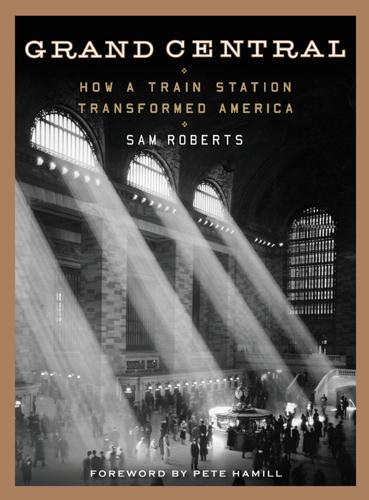
Grand Central: How a Train Station Transformed America
by
Sam Roberts
Published 22 Jan 2013
TERMINAL CITY LOOKING NORTH OVER THE OLD SMOKY YARDS,” William Wilgus recalled years later, “I idly sketched one day in 1902 an annex of office buildings.” What he envisioned would become Terminal City, or the Grand Central Zone. Whatever the name, it was destined to be transformed within a decade into some of the most valuable real estate in the world and an unlikely showcase for the flourishing City Beautiful Movement that had captured the public’s imagination through the model “White City” a decade earlier at the World’s Columbian Exposition in Chicago. Among the movement’s protagonists was the architect Daniel Burnham, who had designed the beloved Flatiron Building off Madison Square in Manhattan and was invited to submit plans in the competition to design Grand Central Terminal.

Data Action: Using Data for Public Good
by
Sarah Williams
Published 14 Sep 2020
Hammack and Stanton Wheeler, Social Science in the Making: Essays on the Russell Sage Foundation, 1907–1972 (Russell Sage Foundation, 1995). 53 Jon A. Peterson, The Birth of City Planning in the United States, 1840–1917 (Baltimore: Johns Hopkins University Press, 2003). “Having outgrown the City Beautiful movement, its leaders sought to deepen their expertise, enhance their legal powers, refine their methodology, and above all make planning work. Substantively, they laid claims to the control of private property, most notably through zoning. Procedurally, they adopted the social survey as a prerequisite to the plan making, while institutionally, they made the city planning commission their preferred mechanism for attaining results” (p. 263). 54 Andreas Faludi, A Reader in Planning Theory (New York: Pergamon Press, 1973); A.
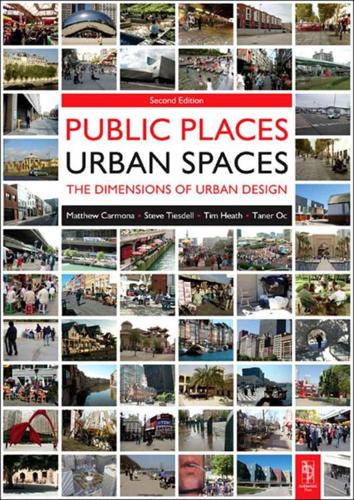
Public Places, Urban Spaces: The Dimensions of Urban Design
by
Matthew Carmona
,
Tim Heath
,
Steve Tiesdell
and
Taner Oc
Published 15 Feb 2010
The term itself had been coined in North America in the late 1950s and is often associated with Jose Luis Sert, Dean of Harvard’s Graduate School of Design, convening an ‘urban design’ conference at Harvard in 1956 and subsequently setting up the first American urban design programme at that university (see Krieger & Saunders 2009). As a term for the activity, it replaced the more traditional and narrower term ‘civic design’. Typified by the City Beautiful Movement, civic design focused on the siting and design of major civic buildings – city halls, opera houses and museums – and their relationship to open spaces. Evolving from an initial, predominantly aesthetic, concern with the distribution of building masses and the space between buildings, contemporary urban design denotes a more expansive approach and, reflecting the title of this book, has become primarily concerned with shaping urban space as a means to make, or re-make, the ‘public’ places that people can use and enjoy.
…
section=publications_EDG http://www.transitorienteddevelopment.org http://vancouver.ca/commsvcs/currentplanning/urbandesign/index.htm Index A Accessibility 81, 137disability and 158–160 mobility and 160–161 physical access 156 robustness and 247 symbolic access 156 visual access 156 Active engagement 211 Active frontage 215–219 Activities in public space 236 Adelaide, Australia 101, 105 Advisers 282 Aesthetic preferences 85–101patterns and 170 Agency 258 Agency models 270 Air quality 228 Alexander, Christopher 3, 6, 7, 14, 102, 103, 145, 176, 177, 203, 214, 219, 258–262, 293–294, 369 ‘All-of-a-piece’ urban designers 19 Animation 19 Appleyard, Donald 8–10, 12, 39, 102, 103, 106, 113, 116, 170, 240, 269, 346, 369, 372, 378, 379 Appraisal 302–306area-wide appraisal 303–304 district/region-wide appraisal 302–303 site-specific appraisal 305–306 Architectural code 317 Architecture 184–186types 78–92see alsoBuildings Authenticity, lack of in invented places 128–130 B Bacon, Edward 57, 111, 122, 175, 208, 259, 264, 321, 353, 370, 372, 374, 383 Balance 139 Balanced communities 142 Banerjee, Tribid 137 Barcelona, Spain 138 Barnett, Jonathan 16, 93, 97, 259, 285, 370 Battery Park City, New York, USA 93 Beijing, China 127 Ben-Joseph, Eran 12, 91, 92, 108, 109, 316, 370, 384–386 Bentley, Ian 4, 9, 11, 13, 16, 50, 56, 60, 77, 82, 91, 96, 101, 103, 121, 149, 177, 220, 227, 254, 256, 288, 289, 291, 333, 370, 371 Biddulph, Michael 42, 102, 109, 124, 142, 313, 324, 331, 370–371, 381, 385 Bilbao, Spain 45 Birmingham, England/UK 108 Bosselmann, Peter 175, 182, 331, 333, 343, 348, 351, 353, 356, 370, 371 Boston, Massachusetts, USA 193 Boundaries: edges 113–115 neighbourhoods 141–147 Breheny, Michael 25, 39, 223, 371, 382 Brisbane, Australia 101 Builders 283 Buildings as constituents of urban blocks 93–94 attributes of good buildings 243–244 freestanding buildings 85–86, 186 structures 61 symbolic role of 118 urban architecture 184–186 Built environment professions, roles of 12–13 Burgage plots 78 Burgess's Concentric Zone Model 28 C CABE (Commission for Architecture and the Built Environment) 53 Cadastral (street) pattern 80–82accessibility 81 permeability 81 persistence of 101 Calthorpe, Peter 10, 15, 41–42, 84, 108, 226, 371–372 Capital web 234–240 Carmona, Matthew 7, 12–13, 55–59, 70–71, 137–139, 184–185, 219–220, 233–236, 263–265, 278, 284, 291–292, 310–311, 321–331, 355–356, 364–368 Carr, Stephen 141, 154–155, 208–209, 211, 372, 380 Cars 103accessibility and 153 impact on urban form 38 motorist's visual experience 170 parking 217 problems of car dependency 37 road networks 77, 90 traffic calming measures 237 traffic reduction proposals 238see alsoTransport Central Business District (CBD) 28block structures 57, 78, 83 Change 84management of 243–244 robustness 253–256 time frames of 252–253 urban environment 14see alsoUrban development Charter for New Urbanism 41–42 Chicago 83 Chicago School 28, 29 Childs, Mark 16, 169, 262, 263, 372see alsoconcinnity Choice 49 Circulation mesh 101 Cities 101Central Business District (CBD) 25block structures 57, 92, 93 identity 112 images of 127districts 128 edges 101 landmarks 113 nodes 41 paths 113 transformations in urban form 230industrial cities 29 informational age urban form 31–32 post-industrial urban form 29–31see alsoUrban design; Urban development; Urban environment; Urban morphology; Urban space City Beautiful Movement 3 Civic design 3 Comfort 8, 160 Communication 210communication gaps 332–335designer–non-designer gap 333 designer–user gap 334 powerful–powerless gap 334 professional–layperson gap 332–333 reality–representation gap 333 informative 349 persuasive 269 technology 31–34, 46impact on urban form 38see alsoRepresentation Communities 10balanced communities 55, 57–59 community motivators or catalysts 14 gated communities 149 role in development process 279see alsoParticipation Community urban design 17 Compact city/cities 26 Competition 45, 61 Computer imaging and animation 354 Computer-aided design 350–351 Computers, participation and 229 Concept providers 19 Conceptual urbanism 40, 41 Concinnity 262 Congress for New Urbanism 9–10 Connotation 117 Conservation 245–247, 249management 270 Consultation 284 Containment 176, 178 Continuity of place 247–248 Controls 31, 150, 258public sector role 295see alsoPublic sector smart controls 34 zoning controls 308see alsoAppraisal Conzen, John 77, 78, 183, 252, 373 Copenhagen 242 Copenhagen, Denmark 175 Crawford, Margaret 44, 372–373, 378, 381, 385 Crime 147displacement 153 fear of victimisation 165 perception of 169 prevention 307‘broken windows’ theory 328 dispositional approaches 150 situational approaches 150see alsoSecurity Crime Prevention Through Environment Design (CPTED) 150 Cul-de-sacs 151, 152 Cullen, Gordon 3, 6–7, 170, 174–175, 177, 182–185, 316, 345–346, 353, 373, 376see alsoTownscape Culture 113, 124mass culture 124 Curvilinear layouts 83 Cuthbert, Alexander 4, 5, 52, 55, 165, 205, 373 D Decentralisation 32, 25, 39 Democracies 63 Denotation 117 Density 223–226benefits of higher density 223 urban form and 224 Denver, Colorado, USA 42 Design 3, 71–74policies 18see alsoUrban design Design briefs 312–313 Design codes 316–319 Design frameworks327 seeUrban design Detroit, Michigan, USA 23 Developers 275–279motivations of 275–279 types of 275 Development advisers 282 Development funders 287 Development pipeline model 271, 270–274development feasibility 270–274market conditions 272–273 ownership constraints 271 physical conditions 271–272 project viability 273–274 public procedures 272 development pressure and prospects 270see alsoDevelopment process Development process 11–12, 269–295actors and roles 269–270, 274–275adjacent landowners 283 advisers 282 builders 282 developers 275–279 funders 280–281 investors 280 landowners 279–280 motivations of 285 occupiers 284 public sector 284–286 land and property development 269–274 models 270agency models 270 equilibrium models 270 event-sequence models 270 institutional models 270 structure models 270see alsoDevelopment pipeline model quality issues 286–295monitoring and review 324–325 producer–consumer gap 286–288 public sector role 297, 301 urban design quality 291–295 urban designer's role 288see alsoUrban development Diagrams seeRepresentation Disability 158–160 Discovery 213–214, 258 Disneyland 129 Disneyworld 152–153 Displacement 152 Districts 115 Dovey, Kim 70, 117, 119, 120, 123, 124, 130, 264, 331, 374 Duany, Andres 9, 12, 31, 37, 42, 80, 90–92, 109, 143–144, 147, 188, 222, 234, 257, 317–320, 333, 355, 374see alsoNew Urbanism Duany & Plater-Zyberk (DPZ) 9, 37, 144, 317–318, 355, 374 E Eco-masterplanning 49 Edge cities 41 Edges 89–90, 173–178 Edinburgh, Scotland/UK 197 Education 325–326 Electronic communication 21, 32impact on urban form 38 Ellin, Nan 10, 14, 119, 129–130, 140–141, 146, 148, 155, 263, 282, 297, 374–375see alsoIntegral Urbanism Enclosure 179squares 170 streets 182–183 Engagement 209, 213active 211–212 passive 209 English Heritage 196, 304 Environment seeUrban environment Environmental design 93, 150–152lighting 228–229 microclimate 226 sun and shade 227 wind 227–228 Environmental footprints 53 Environmental issues 51–55fossil fuel consumption 37, 38 global warming 38, 46 pollution 51, 55 sustainable development 7–8, 11, 51, 233by spatial scale 58–59 density and 224 strategies for 200, 218 Environmental meaning 117–119 Environmental perception 111–119 Environmental symbolism 117–119 Equilibrium models 270 Equitable environments 158disability 158–166 mobility 160–161 social segregation 145, 146 Essex Design Guide 92 Event-sequence models 270see alsoDevelopment pipeline model Everyday Urbanism 40 Exclusion 158–160disability and 158–160 mobility and 145 strategies 150–153 voluntary exclusion 148 Facades 178, 186–187 F Facilitators of urban events 19 Fear of victimisation 148 Figure-ground techniques 346 Figure-ground studies 190 Finance 269funders 280–281 investors 283 Fishman, Robert 15 Floorscape 193–195 Florida, Richard 8 Flusty, Steven 29, 156, 205, 208, 211–213, 373, 375 Footpath design 234–236 Fossil fuel consumption 37–38, 46, 51 Fragmentation 11–12, 64by roads 90–91, 256 social fragmentation 257 Frontage 183 Functional zoning 220–222 Funders 280–282 G Gans, Herbert J 133, 143, 144, 253, 375 Garages 216 Garden cities 25 Garden suburbs 199 Garreau, Joel 27, 28, 259, 262, 314, 375see alsoEdge cities Gated communities 291 Geddes, Patrick 319 Gehl, Jan 3, 7, 110, 202, 207–211, 236, 242, 259–261, 375see alsoactivities in public space Geographic Information Systems (GIS) 346, 349 Gestalt theory 170 Glasgow, Scotland/UK 193 Global context 51–55 Global warming 38, 46 Globalisation 124 Governance 64 Government 63–65market–state relations 65–68 reinventing of 69 structure of 77 Grid erosion 90 Guideline designers 19 H Harmonic relationships 173 Harvey, David 22, 55, 61, 68, 69, 124, 125, 130, 376 Hearing 111 Hebbert, Michael 15, 86, 88, 105, 109, 229, 377 Hierarchy of human needs 134, 136 Hillier, Bill 82, 150–152, 203–208, 377 Home Zones 109 Hulme, Manchester 280 I Icon, iconic 117, 126–127see alsostarchitect Identity 90, 92personalisation and 121 Image 112–113 Imageability 113 Images 113districts 115 edges 114 landmarks 116 nodes 115 paths 114 Incentive zoning 308 Incivilities 148 Industrial cities 22 Industrial Revolution 25 Informational age 31 Infrastructure 230designers 16–17 Institutional models 270 Integral Urbanism 10, 14, 263see alsoEllin, Nan Integration 187–193 Internet 342 Invented places 128–130lack of authenticity 132 manufactured difference 103–104 other-directedness 130 superficiality 130 Investors 256 Involvement seeParticipation J Jacobs, Allan 8–9, 12 Jacobs, Jane 3, 7, 10, 41, 135, 150, 151, 202, 258, 265, 378 Japanese cities 50 Jarvis Bob 6 K Kaliski, John 44 Kelbaugh, Douglas 23 Keno Capitalism 29 Kentlands, Maryland, USA 42, 317, 318see alsoNew Urbanism Kinaesthetic experience 170–176 Knox, Paul 23, 28, 30, 31, 39, 59, 112, 117–119, 121, 124, 166, 213, 244, 275, 279, 371, 374, 378–379, 381 Koetter, Fred 78, 94–95, 259, 384 Koolhaas, Rem 45 Krier, Leon 86, 95, 97, 102, 142, 172, 266, 379 Krier, Rob 95, 96, 145, 179, 222, 379 Kunstler, John Howard 14, 26, 37, 38, 227, 258, 379 L Land development 264see alsoDevelopment process; Urban development Land markets 5 Land uses 13mixed use 220–223 Land value 23 Landmarks 116 Landowners 279–280, 292adjacent landowners 283–284 Landscape code 256 Landscape Urbanism 45 Landscaping 198hard 199 soft 198, 199–200 Lang, Jon 12, 13, 17–19, 42, 48, 54–55, 67, 103, 111–112, 133, 136, 220, 332, 361, 379 Las Vegas, Nevada, USA 23 Lawson, Bryan 96 Le Corbusier 6, 21–23, 85, 87, 183, 369, 371, 379 Lefebvre, Henri 44, 84, 86, 202, 241, 246, 380 Leinberger, Christopher 33, 34, 37, 60, 62, 91, 269, 281–282, 297, 380 Lighting 228–229natural lighting 228 street lighting 228 Local context 47–51 London 48, 253, 299Canary Wharf 70 Docklands 70 Los Angeles School 29 Los Angeles, California, USA 29 Loukaitou-Sideris, Anastassia 11 Lynch, Kevin 3, 6–8, 10, 112, 113–116, 121, 145, 147, 154, 169, 170, 212, 241, 243, 245–247, 253–254, 258, 297, 302, 305, 345, 369, 380 M MacCormac, Richard 72, 216–218, 223, 239, 247, 380 McGlynn, Sue 9, 12, 14, 288–289, 334, 346, 370, 377, 380 Madanipour, Ali 4, 59, 124, 215, 219, 257, 277, 380, 381 Maintenance 328–329 Management 326–329conservation 327–328 maintenance 328–329 public realm 139–141 regeneration 327 transport 326–327 Managerialism 376 Manchester, England/UK 115 Manhattan, New York, USA 33, 83, 100 Manipulation 331–335 Maps seeRepresentation Market context 55–60, 290, 364market–state relations 65–68 operation of markets 60–61 Marketplace urbanism 40, 41 Marshall, Stephen 20, 23, 91–93, 261, 262, 372, 378, 381 Maslow's hierarchy of needs 134 Mass culture 124 Master plans 229 Meaning 113, 116–117neighbourhoods 141–147 Melbourne, Australia 70 Microclimate 226–228 Mitchell, Bill 31–34, 49, 50, 137, 159, 160, 239 Mixed use 220–223 Mobility 160–161 Models 351–353Burgess's Concentric Zone Model 28 conceptual models 352 development process 269–295agency models 270 equilibrium models 270 event-sequence models 270 institutional models 270 structure models 270 presentation models 352 working models 352see alsoDevelopment pipeline model Modernism 119Modernist urban space 23, 77 New Modernism 25 symbolism and 119 Monderman, Hans 108, 197, 198 Montgomery, John 112, 120, 122, 200, 206, 221, 244, 381 Monuments 180 Moudon, Anne Vernez 77, 79, 102, 108, 222, 228, 254, 256, 266 Movement, through public space 201 N National Playing Fields Association 234 Neighbourhoods 141–147boundaries 145 mixed-use 220–223 neo-traditional neighbourhoods (NTDs) 9–10 size of 144, 149 social mix and balanced communities 145 social relevance and meaning 145 traditional neighbourhood developments (TNDs) 9–10, 142 types of 116 Neighbourhood Unit 143 Neo-liberalism 68 Neo-traditional neighbourhoods (NTDs) 9–10 Newman, Oscar 24, 37–40, 51, 92, 150, 151, 224, 335, 376, 382 New Modernism 25 New Urbanism 9–10, 41–43Charter for 41–42 New Urbanist codes 317, 319 New York, USA 32 Nodes 115 Noise 220 O Obsolescence 248–252 Occupiers 284 Open space 234 Opportunity reduction (approaches to crime prevention) 150 Opportunity space 65 Organic growth 262 Organicists 14 Orthographic projections 348, 349 Ownership constraints 271 P Paraline drawings 349, 350 Paris 10 Parking 238–239see alsoCars Participation 297, 329bottom-up approaches 336 top-down approaches 336 Passive engagement 209–210 Paths 13–14 Patterns 6–9aesthetic preferences and 169 plot pattern 79–80see alsoCadastral (street) pattern Pedestrian activity maps 344 Pedestrian pockets 9–10 Pedestrianisation 235Copenhagen 242, 260–261 Perception 111–119environmental perception 111–119 of crime 149 Performance indicators 324 Perimeter cities 26 Permeability 99 Personalisation 121 Perspective drawings 349–350 Persuasion 331–335 Perry, Clarence 87, 89, 141–143, 382see alsoNeighbourhood Unit Perth, Australia 101 Phenomenology 112, 120 Photomontages 350 Philadelphia, Pennsylvania, USA 250 Phoenix, Arizona, USA 38 Physical conditions 271–272 Place image 112–113 Place identity 111, 112 Place theming 128 Place attributes of successful places 206 construction of 119–125 identity of 121 invented places 128–130lack of authenticity 132 other-directedness 130 superficiality 130 making places tradition of urban design 7 sense of 120–121neighbourhoods and 141–147 personalisation 121 territoriality 121 significance of 20 Placelessness 123–125globalisation and 123 loss of attachment to territory 124 mass culture and 124 Plants 209 Plater-Zyberk, Elizabeth 9, 37, 144, 317, 330, 374see alsoNew Urbanism Plot pattern 79–80 Pod developments 90–91 Policy 306–325 Policy makers 19 Politics 63 Pollution 33, 39 Portland, Oregon, USA 363 Postmodernism 119, 128, 130superficiality 130 symbolism and 117–119 Post Urbanism 43 Poundbury, Dorchester, UK 42, 236 Power 118, 119, 332 Powergram 288–291, 334 Prague, Czech Republic 80 Precinct principle 89 Preservation 246–247, 252 Privacy 219–220aural privacy 220 visual privacy 219–220 Private sector 65 Privatisation 68, 140, 148 Producer-consumer gaps 277, 285 Professional–layperson gap 332–333 Project for Public Space 127, 134, 138, 206, 292 Project viability 273–274 Property development 4see alsoDevelopment process; Urban development Property markets 222 Public goods 62 Public life 138–139 Public participation seeParticipation Public procedures 272 Public realm 10, 137–141decline of 141 design 17 exclusion strategies 156 function of 201 management and 157–158 physical and sociocultural public realms 122, 139–141see alsoPublic space Public sector 67, 69–70, 272appraisal 273area-wide appraisal 303–305 district/region-wide scale 302–303 site-specific appraisal 305–306 design briefs 312–313 design control/review 320–322 design frameworks and codes 313–316 intervention by 71 management role 298conservation 301 maintenance 328–329 regeneration 327 transport 326–327 monitoring and review 324–325 policy 229 role in development process 279 role in quality control 306 Public space 201, 205–206comfort 209 discovery 213 edges 212 engagement 209–211active 211–212 passive 209–210 exclusion strategies 157 external 139 internal 139 movement through 201, 202, 204 network 83–85 quasi-public space 138 relaxation 209 shape 266 social use of 98–103see alsoPublic realm; Urban space Punter, John 6, 35, 63, 71, 91, 122, 257, 298, 306, 308, 310, 313, 319, 322, 324, 325, 347, 355, 356, 370, 372, 383 Q Quality in Town and Country initiative 71 Quality issues 11, 12, 13constraints 361, 362 monitoring and review 324–325 producer–consumer gap 277, 286–288 public sector role 295, 301see alsoPublic sector urban design quality 336 urban designer's role 288 Quasi-public space 138 R Radiance 180, 182, 185 Reality–representation gap 333 Redevelopment 22, 88, 89 Regeneration 327 Regulatory context 68government structure 64 market–state relations 65–68 Relaxation 209 Relph, Edward 13, 112, 119–125, 128, 130, 131see alsoplacelessness Representation 343–354analytical representations 344–348 computer imaging and animation 354 computer-aided design 354 conceptual representations 343–344 four dimensions 353–354 Geographic Information Systems (GIS) 348 models 349 orthographic projections 349 paraline drawings 350 perspective drawings 349–350 photomontages 350 serial vision 353–354 sketches 350 three dimensions 349–353 two dimensions 348–349 video animations 354 Resilience 253–256 Responsive environments 9 Reurbanism – seeFishman, Robert Rhyme 172 Rhythm 172 Rhythmic repetition 241 Road design 234–238 Road networks 86impact on urban form 21, 25, 32see alsoCars; Transport Robustness 253–256access and 304 cross-sectional depth and 254, 256 room shape and size and 254, 256 Rome, Italy 175 Rowe, Colin 78, 94, 95, 259, 384see alsoFigure-ground studies Rybczynski, Witold 83, 131, 300, 384 S Safety 147–15324-hour cities 244 road design and 234–238 San Francisco, California, USA 10 Savannah, South Carolina, USA 82 Scale 6 Schwarzer, Mitchell 36–37, 40–41, 159, 160, 166, 239 Seaside, Florida 42, 98see alsoNew Urbanism Seaside, Florida 317 Seasonal cycle 329 Seattle, Washington 51, 101 Security 147–154animation/peopling approach 153 crime prevention 150 fortress approach 153 management/regulatory approach 153 panoptic approach 153see alsoCrime Semiotics 117 Serial vision 353–354 Servicing 238–239 Seven Clamps of Urban Design 12 Seoul, South Korea 84 Shade 226 Shanghai, China 231 Shared streets 109 Short-termism 62, 257, 275, 360 Sieve maps 17 Sienna, Italy 176, 300 Signification 116–117 Simulation 130see alsoInvented places Sitte, Camillo 6–7, 83, 95, 177–184, 186, 200, 372, 385 Situational approach (to crime prevention) 150 Sketches 350 Slow Food 39 Slow City 39 Smart controls 297 Smart growth 36, 46 Smell 111 Social costs 62 Social mix 145–146 Social segregation 145, 146, 147 Social space 83, 84, 86see alsoPublic space Social urbanism 40, 41 Sonic environment 111 Soundscape 111 Southworth, Michael 26, 91, 92, 108–109, 215–216, 235, 236, 302, 316, 319, 370, 375, 380, 385 Space Left Over After Planning (SLOAP) 86, 234 Space seePublic space see alsoUrban environment; Urban space Space syntax 203–205 Spatial analysis 302 Spatial containment 176, 178 Squares 179–182amorphous squares 182 closed squares 181 dominated squares 182 enclosure 180 freestanding sculptural mass 180 grouped squares 182 monuments 180 nuclear squares 182 shape 180 Starchitect 125, 127see alsoicon, iconic Stevens, Quentin 205, 208, 211–213, 372, 375, 382, 385 Sternberg, Ernst 14 Street furniture 196–198 Street Reclaiming 80 Streets 182–183lighting 228–229 pattern seeCadastral (street) pattern; Road networks Structure models 270 Suburbs 29–31 Sunlight 227–228 Superficiality 130 Surveillance 150–154 Sustainable development 51–55, 307by spatial scale 58–59 density and 225 strategies for 56–57 SWOT analysis 306 Sydney, Australia 126 Symbolism 117–119 T Talen, Emily 42, 143, 147, 294, 319, 374, 385 Technical standards 12–13 Telecommunications 17impact on urban form 38 Territoriality 121loss of attachment to territory 125 Theme parks 129crime prevention 150, 151, 153see alsoInvented places Third place 138–139 Third way 71 Tibbalds, Francis 4, 6, 9, 47, 187, 255, 258, 264, 361, 386 Tiesdell, Steve 46, 65, 140, 147–149, 153, 220, 244, 269, 290–291, 363 Time cycles 241–244 management of 243–244 march of 244–257 time frames of change 252–253 Tissue studies 346 Tokyo (Japan) 50, 196 Toronto (Canada) 99 Total designers 19 Touch 111 Town Centre Management 298 Townscape 183–184 Traditional neighbourhood developments (TNDs) 9, 142 Traditional urbanism 40 Traffic calming measures 237 Transit-oriented development (TOD) 10, 226 Transport environmental sustainability issues 35 impact on urban form 29, 31, 36, 39 management 326 road networks 90 technology 31–34see alsoCadastral (street) pattern; Cars Trancik, Roger 86, 176, 332, 336, 386 Transect 311, 319see alsonew Urbanism, Andres Duany Trees 199air quality and 228 shade 227 wind protection 226, 227 Triangulation 211 Twenty four-hour society 243 U Urban architecture 184–186see alsoBuildings Urban code 317 Urban conservationists 19 Urban design 3–20, 269as joining up 13–16the professions 14–16 the urban environment 14 challenges 361 clients and consumers of 18–20 controls 12 definitions 4, 10ambiguities in 4 relational definitions 4 scale and 19 design briefs 312–313 design codes 316–319 design review and evaluation 320–324 frameworks 10–11Allan Jacobs and Donald Appleyard 8–9 Francis Tibbalds 9 Kevin Lynch 8 responsive environments 9 The Congress for New Urbanism 9–10 global context 51–55 holistic approach 363–366 ‘knowing’ urban design 17, 72, 162 local context 47–51 market context 55–62 monitoring and review 324–325 need for 11–13 practice 17–20types of 17 process 71–74 quality 272barriers to 357 questioning 360 regulatory context 63 Seven Clamps of Urban Design 13 technical standards 13 traditions of thought 6–8making places tradition 7–8 social usage tradition 7 visual-artistic tradition 6–7 ‘unknowing’ urban design 11, 17 Urban Design Alliance (UDAL) 15Placecheck 304 Urban Design Group (UDG) 15 Urban development change management 225 development briefs 312–313 environmental sustainability 35, 37, 45, 69, 165density and 225 strategies for 22 sustainable design by spatial scale 58–59 quality 286–295 smart growth 36 transformations in urban form 39industrial cities 21, 22 informational age urban form 31–34 post-industrial urban form 29see alsoDevelopment process; Urban design Urban entertainment destination (UED) 129see alsoInvented places Urban environment changes 49time frames of 252–253 components of 55 culture relationship 39 environment-people interaction 133environmental determinism 133 environmental possibilism 133 environmental probabilism 133 environmental perception 111–112 equitable environments 158–166disability 158–160 mobility 160–161 social segregation 145 management 277, 283, 326conservation 327–328 maintenance 328–329 regeneration 327 transport 326–327 quality issues 10, 12, 15public sector role 295, 301 urban environmental product 11see alsoCities; Urban development Urban grids 88grid erosion 90 Urban managers 19 Urban morphology 77–78building structures 78–79 cadastral (street) pattern 80–81 capital web 234–240 density and 225 freestanding buildings 85, 186 land uses 78 plot pattern 79–80 pod developments 90–91 public space network 83–85 return to streets 92 road networks 86 super blocks 89–90 urban blocks 93–94block sizes 96–99 persistence of block pattern 101see alsoCities Urban population growth 25 Urban quarters 142 Urban regeneration 327 Urban renaissance 35 Urban space 21, 176design 21–23 Modernist 22–23, 77 positive and negative space 176 positive space creation 176–179 traditional 77return to 114see alsoPublic space Urban Task Force 35, 71, 223, 225–226, 237, 257, 327, 386 Urban villages 142, 144 Urban Villages Forum 142 V Vegetation 199 Venice 175 Venturi, Robert 23, 128 Victimisation 148 Video animations 354 Virtual reality 354 Vision 111 Vision makers 19 Visual experience aesthetic preferences 169 motorists 175 patterns and 170 Visual privacy 219–220 Visual qualities 176–200 Voluntary exclusion 148 W Washington DC 28, 83 Wind environment 227–228 Whyte, William H (Holly) 7, 106, 135, 208, 210–211, 215, 379, 387 Woonerfs 109 World Wide Web 342 Y Yeang, Ken 49, 364, 387see alsoeco-masterplanning Z Zoning 220–223controls 297 incentive zoning 308 Zucker, Paul 95, 176, 179, 181–182, 387 Zukin, Sharon 61, 124, 128, 137, 213, 387
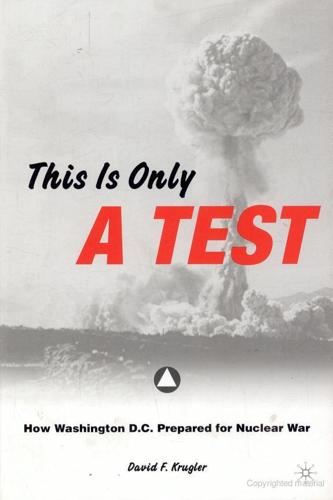
This Is Only a Test: How Washington D.C. Prepared for Nuclear War
by
David F. Krugler
Published 2 Jan 2006
Throughout American history, political leaders and groups have used Washington, as both city and capital, to fulfill national goals, set an example, provide a prototype.7 Americans have marched in Washington seeking women’s suffrage, veterans’ bonuses, and to stop the Vietnam War.8 Southern members of Congress correctly recognized that intense efforts to abolish slavery in the District signified a national struggle, prompting them to redouble efforts to protect slavery in the border states.9 During Reconstruction, Congress used the District as a “proving ground” for national legislation.10 After World War II, the District’s racial segregation tarnished America’s democratic ideals, and Presidents Truman and Eisenhower both regarded desegregation of the District as a Cold War necessity.11 Washington has also served as a model and laboratory for urban planning and practices. After the Civil War, the city’s business elite tapped Congressional interest in creating a world-class capital to modernize the city’s infrastructure.12 In 1902, Washington became a showcase for the City Beautiful movement through the McMillan Plan, which sought to create “the capital of a new kind of America—clean, efficient, orderly and, above all, powerful.” In 1926, Congress created the National Capital Park and Planning Commission. Responsible for providing a coordinated plan for metropolitan Washington, Commission members have also historically recognized their responsibility to make the capital region “worthy of the nation.”13 In the 1930s, New Deal officials used Washington to devise national public housing programs; postwar redevelopment and slum razing in Washington was also supposed to serve as a national model.14 In light of this history as political terrain and potent symbol, it’s not surprising that Washington served as a measure of national preparedness for nuclear war.
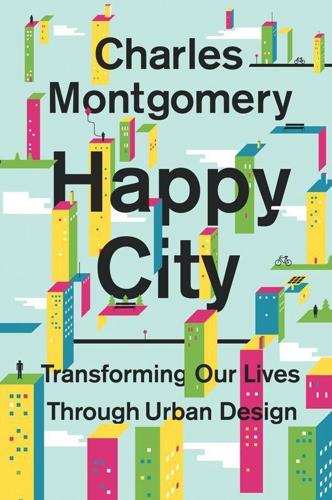
Happy City: Transforming Our Lives Through Urban Design
by
Charles Montgomery
Published 12 Nov 2013
In the messy realm where public life, leisure, and politics collide, enlightened talk in the Palais-Royal about the right for all to enjoy happiness contributed to a revolution that would eventually see Louis Philippe II lose his head. Moral Renovations Since the Enlightenment, architectural and city planning movements have increasingly promised to nurture the mind and soul of society. Members of the City Beautiful movement were explicit in their assurances. Daniel Burnham, designer of the 1893 World’s Columbian Exposition in Chicago, proclaimed that beauty itself could reform society and conjure new virtue from citizens. His showpiece was a model city of gleaming white Beaux Arts monuments scoured clean of any signs of poverty.
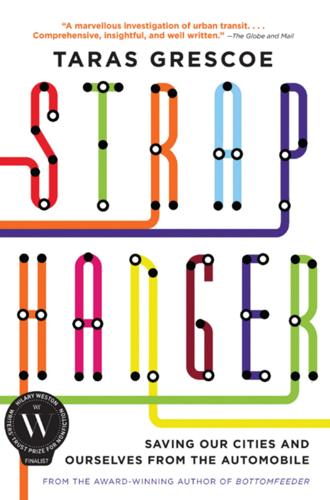
Straphanger
by
Taras Grescoe
Published 8 Sep 2011
Gracious apartment living, first pioneered in such Gilded Age upper-income buildings as the Stuyvesant Apartments (1869) on Eighteenth Street and the Dakota (1884) on Seventy-second, encouraged a dense, class-mixed urban environment, where working families lived within walking distance of their employers. The addition of Frederick Law Olmsted’s Central Park—based on the “People’s Garden” in Liverpool, the first public urban park—provided a welcome respite from the gridiron, and more block-sized parks were being created all the time. The wealthy Progressives of the City Beautiful movement successfully lobbied for civic art and enduring public monuments inspired by Classical architecture (and against ads in the subway—a battle they lost). Indoor plumbing, electric lights, and improvements in public health made the city a cleaner, more pleasant place to live. The trend was global: along with the Eixample of Barcelona, the Champs-Elysées in Paris, the Gold Coast in Chicago, the Recoleta in Buenos Aires, and the Bund in Shanghai, Fifth Avenue became a proving ground for the latest manifestations of elegant urbanism.
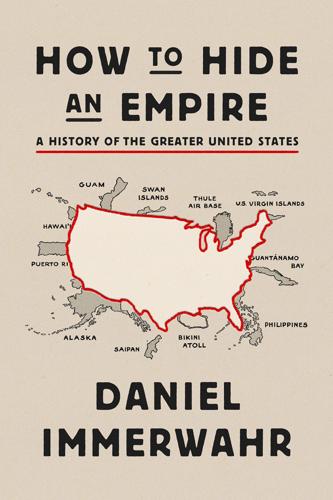
How to Hide an Empire: A History of the Greater United States
by
Daniel Immerwahr
Published 19 Feb 2019
Burnham: The classic biographies are Charles Moore, Daniel H. Burnham: Architect, Planner of Cities (Boston, 1921), and Thomas S. Hines, Burnham of Chicago: Architect and Planner, rev. ed. (Chicago, 1979). On the connections between Bellamy and Burnham, see Mario Manieri-Elia, “Toward an ‘Imperial City’: Daniel H. Burnham and the City Beautiful Movement,” in The American City: From the Civil War to the New Deal, ed. Giorgio Cuicci et al., trans. Barbara Luigia La Penta (1973; Cambridge, MA, 1979), 1–142. “megalomania”: Louis H. Sullivan, The Autobiography of an Idea (1924; New York, 1954), 288. twenty-one million tickets: Reid Badger, The Great American Fair: The World’s Columbian Exposition and American Culture (Chicago, 1979), 131.
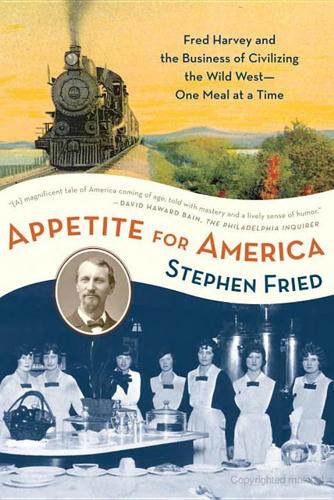
Appetite for America: Fred Harvey and the Business of Civilizing the Wild West--One Meal at a Time
by
Stephen Fried
Published 23 Mar 2010
When the railroad bypassed it in 1880, Santa Fe was forced to do what so many American cities would attempt a century later after losing their manufacturing base—it reinvented itself as a place to visit, a getaway, an escape. It was becoming a haven for health seekers, artists, writers, archaeology buffs, nonpracticing cowboys and cowgirls, and, of course, tourists. Some saw it as a little Paris, a place where the light was also “just different”—but in a distinctly American way. In fact, as a response to the City Beautiful movement that was sweeping America’s urban areas, Santa Fe created its own nickname: “The City Different.” Santa Fe, more than any other place in the Southwest, already offered what the Grand Canyon had lacked: “something conventional,” in Ford’s words, for tourists to do. It had wonderful shopping, restaurants, and galleries in its small, soulful adobe downtown—which was kept soulful and adobe by a 1912 city plan urging architects to employ the Pueblo Revival and Territorial styles exclusively, so the city would always appear unified and in-scale.
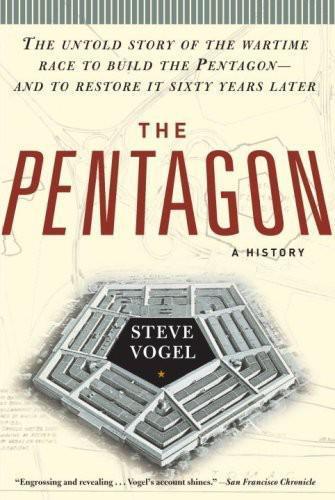
The Pentagon: A History
by
Steve Vogel
Published 26 May 2008
The builders of the federal city had followed the general layout drawn by the French engineer, but over the course of the nineteenth century much of the grandeur envisioned in the plan was marred by a hodgepodge of buildings, depots, carriageways, and clusters of trees that filled in open spaces and destroyed vistas. Celebrations of Washington’s centennial in 1900 triggered a rediscovery of L’Enfant and his vision for a monumental city. L’Enfant’s champions were inspired by the burgeoning “City Beautiful” movement then coming into fashion in architectural and civic circles around the country, the notion that the beautification of a city could boost personal morals, cultural values, and economic growth. In this vein, the Senate created the McMillan Commission, an illustrious committee including architectural luminaries such as Daniel Burnham and Frederick Law Olmsted, Jr.
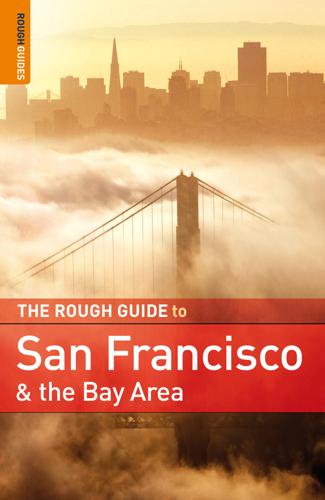
Rough Guide to San Francisco and the Bay Area
by
Nick Edwards
and
Mark Ellwood
Published 2 Jan 2009
In 37 years, the hall has continued to draw big-name performers like Duke Ellington and the Grateful Dead and successful local acts, in every genre from punk and indie rock to jazz, blues, and world music. Civic Center To the immediate southwest of the grubby Tenderloin stands San Francisco’s grandest architectural gesture: the complex of Beaux Arts buildings known as CIVIC CENTER. This cluster was the brainchild of brilliant urban planner Daniel Burnham, a follower of the “City Beautiful” movement, whose central tenet was that utopian cities in vaguely classical style would be so beautiful that they’d inspire civic loyalty and upstanding morals in even the most impoverished 111 San Francisco’s homeless SoMa, the T e n d e rl oi n , and C i v i c C e nte r San Francisco’s most intractable social problem is homelessness, an issue that’s clear even to casual tourists.
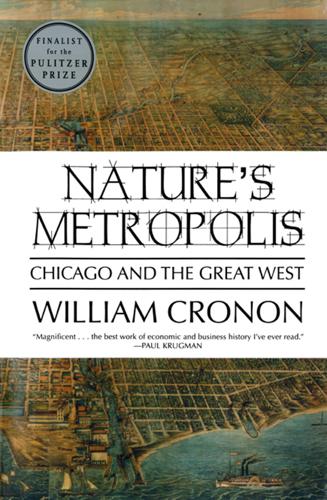
Nature's Metropolis: Chicago and the Great West
by
William Cronon
Published 2 Nov 2009
The best recent works include Thomas S. Hines, Burnham of Chicago: Architect and Planner (1974); David F. Burg, Chicago’s White City of 1893 (1976); R. Reid Badger, The Great American Fair: The World’s Columbian Exposition & American Culture (1979); Mario Manieri-Elia, “Toward an ‘Imperial City’: Daniel H. Burnham and the City Beautiful Movement,” in Giorgio Ciucci et al., The American City from the Civil War to the New Deal (1979), 1–142; Alan Trachtenberg, The Incorporation of America: Culture and Society in the Gilded Age (1982), 208–34; Robert W. Rydell, All the World’s a Fair: Visions of Empire at American International Expositions, 1876–1916 (1984); Frank A.